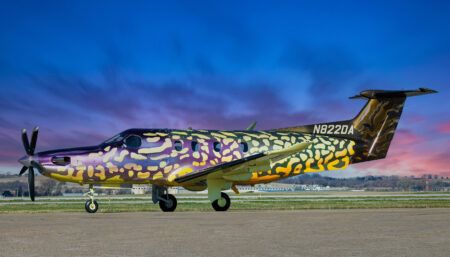James Hardie, director of Rockwell Collins ARINCDirect for EMEA, explains how Rockwell Collins and ARINC have pooled their resources
How did the new setup come about?
Rockwell Collins acquired ARINC at the end of 2013. Having already acquired Air Routing and CTA FOS a few years previously, to provide flight support services to the business aviation market, it made sense to combine all these services. As a result, the new ARINCDirect was formed, which brings together a comprehensive suite of services and support for streamlined, efficient business aviation travel. Our services now include flight planning, international trip support, cabin connectivity and flight operations management.
How has the reconfiguration worked in practical terms?
Firstly, a new division called Information Management Services was created out of ARINC. Within this, our core business aviation teams – based in Houston, Texas, USA, and Annapolis, Maryland, USA – adjusted some overlapping responsibilities and began the work of integrating our services more closely. This also meant integrating some teams and working out a common vision and goals. There was already a great deal of alignment, which meant that we were able to create synergies almost immediately. This has also seen us recruiting more staff to support a growing customer base, especially in terms of technical support, for which we have experts based across the globe.
How will customers benefit from the consolidation?
The consolidation of services means that business aviation flight departments can simplify their own operations by going to a single source for flight support solutions. An additional benefit is that together we have a customer base of more than 3,500 aircraft worldwide. This is a fantastic resource for feedback, which we use to drive our product development roadmaps.
What synergies have you capitalized on?
There are three key opportunities for synergy. The first is in improving the passenger experience of the aircraft, where the combination of our cabin systems (such as Venue and Airshow) and our satellite connectivity solutions enable both an office-in-the-sky experience and IFE.
Secondly, in the cockpit, Rockwell Collins’ Proline Fusion avionics are further empowered by the information that ARINCDirect can deliver to the flight deck via ACARS datalink connectivity. This is already enabling a paperless experience for a number of operators.
The third area is in the management of aircraft operation. We are always looking for smarter ways to manage and disseminate the information we look after for customers. Increasingly integrating our flight operations software with our flight planning and communications capabilities is beneficial for many aspects of flight management.
What cabin connectivity products are offered as part of the ARINCDirect suite?
ARINCDirect can provide aircraft with access to Inmarsat’s SwiftBroadband service, Yonder’s high-bandwidth Ku satellite service and the lower-bandwidth Iridium satellite services. The main differences are the bandwidth capabilities of each service and the equipment required on the aircraft, which may limit options for smaller aircraft. Soon we will also begin providing the next generation of Ka-band satellite connectivity provided by Inmarsat’s I-5 satellites.
We also provide services to assist customers to get the best out of the connections they have. We can provide content filtering, which will block certain websites according to the user’s requirements. A good example would be to prevent software updates while on the aircraft’s connection, or to limit access to streaming video sites.
Another option is for customers to set up usage alerts so that when certain thresholds are exceeded they get an email and can then monitor use in real time. They can then manage access to the internet, as they see fit.
We can also provide a hotspot functionality, whereby users pre-pay for an allotted number of megabytes, and access the internet by inputting a user name and login. Credit card payments can be made on-demand in-flight. It works in a similar way to some hotel wi-fi systems.
We provide real-time monitoring of the connection and usage during flight and also have a technical team to support troubleshooting and other issues that may arise for customers.
What trends are you seeing in terms of connectivity?
The main trend is simply increased demand for higher bandwidth connectivity solutions on board aircraft – this is clear to see from the increasing number of new aircraft being delivered with internet capabilities. As well as increasing usage, there is strong demand for connectivity systems to remain fully functional, all the time. Even though internet service is not technically a critical system for the flight, it is increasingly critical in passengers’ eyes.
How do you plan to expand your offering in the future?
We’ll continue to stay abreast of evolving technologies and explore innovative ways to make flight operations more streamlined and the cabin experience consistently equivalent to the home and office. One of the big ways to accomplish that is to listen to our customers, which we have a strong history of doing.





